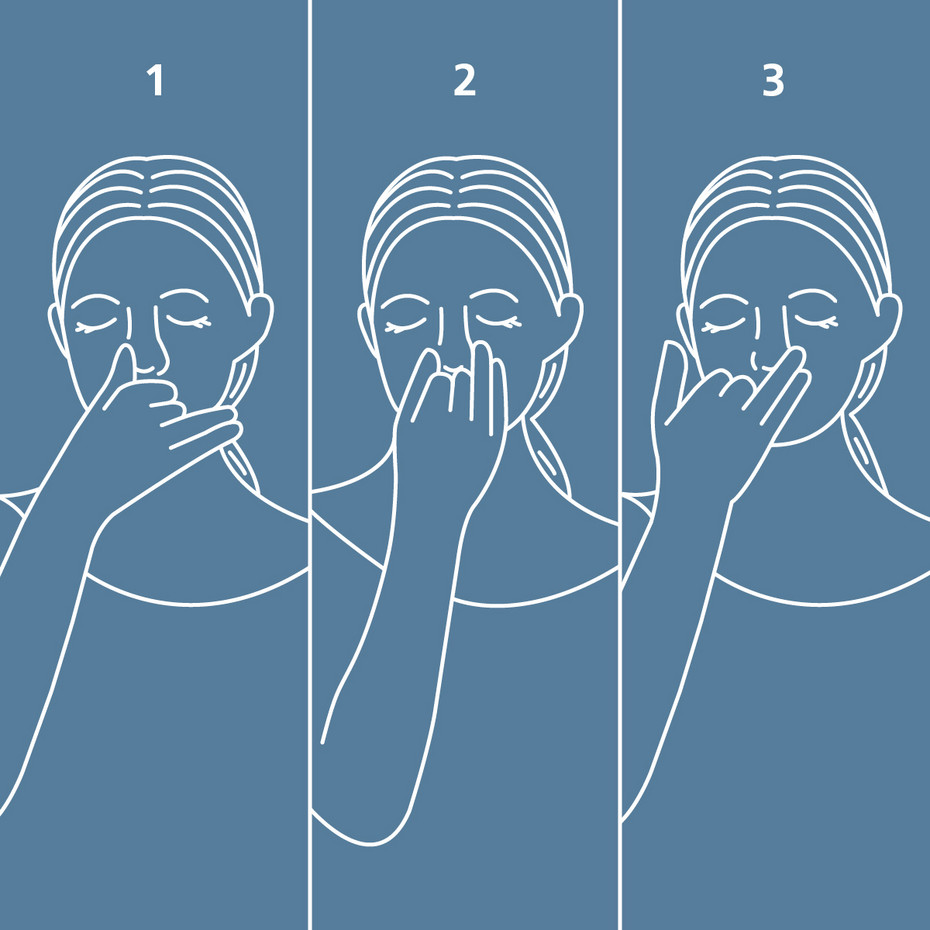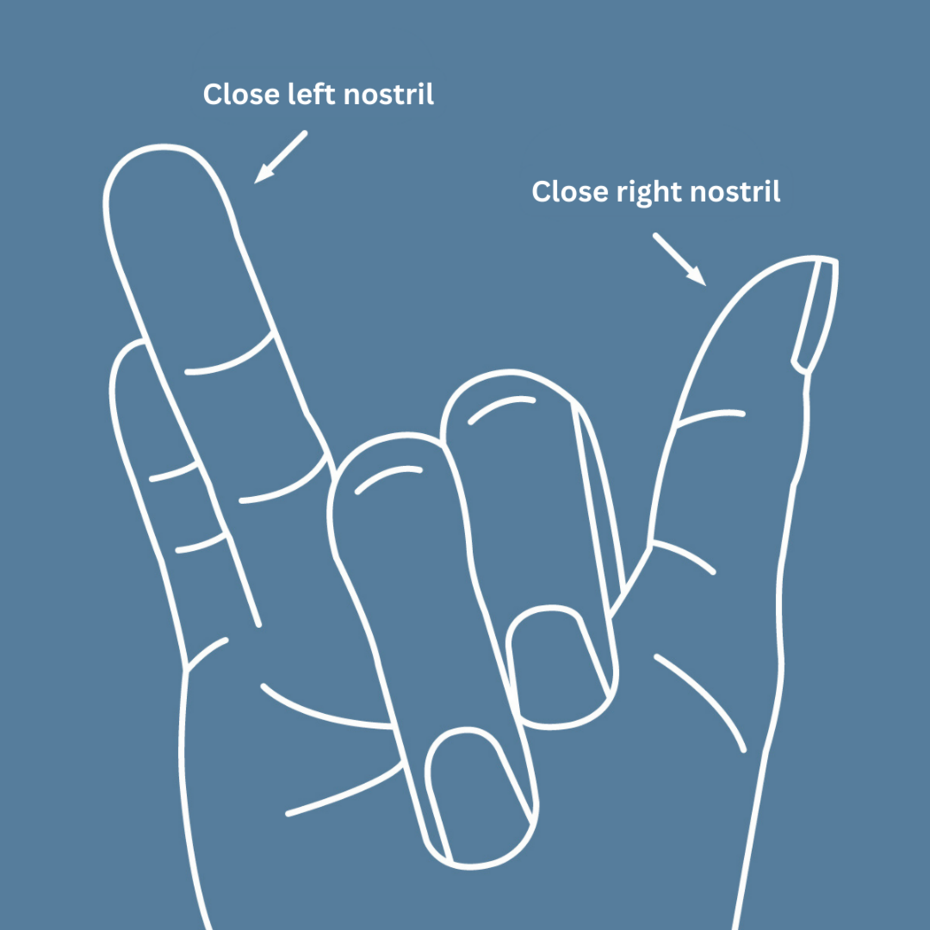Alternate nostril breathing is a form of breathing from yoga which diverts the attention to and calms breathing. It helps manage stress and promotes general well-being. Alternate nostril breathing can be helpful for people with breathing problems because of the calming effect it has.
The basic principle of the breathing technique is breathing in and out through the left and right nostril in turn. To do this, close one nostril and then the other. Hold your right nostril closed with your thumb and the left nostril with your ring finger. Always count to 4 as you breathe in, and to about 8 as your hold your breath and then breathe out.


Note: If you find it difficult to hold your breath for this long, hold it for a shorter time. But do make sure you still breathe out slowly so that as much old air as possible can escape your lungs and is not held there. This prevents or reduces hyperventilation of the lungs.
When you start alternate nostril breathing you can leave out the pause between breathing in and breathing out. This makes it easier to get used to the alternate breathing and to coordinate your hand and your breathing. Once you have found your rhythm, hold your breath between breathing in and out.
This article was written in cooperation with Marlies Zieger. She works as a physiotherapist in private practice in Munich. She specialises in respiratory therapy. She has been treating patients with chronic obstructive and restrictive airway diseases such as asthma, COPD, cystic fibrosis (CF) and primary ciliary dyskinesia (PCD), for more than 20 years.
Note: The information in this blog post is not a treatment recommendation. The needs of patients vary greatly from person to person. The treatment approaches presented should be viewed only as examples. PARI recommends that patients always consult with their physician or physiotherapist first.
An article written by the PARI BLOG editorial team.
© 2025 PARI GmbH Spezialisten für effektive Inhalation